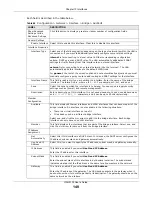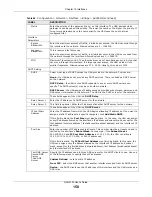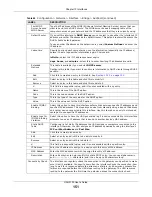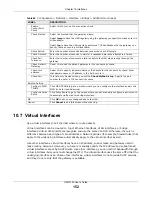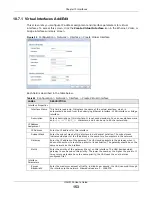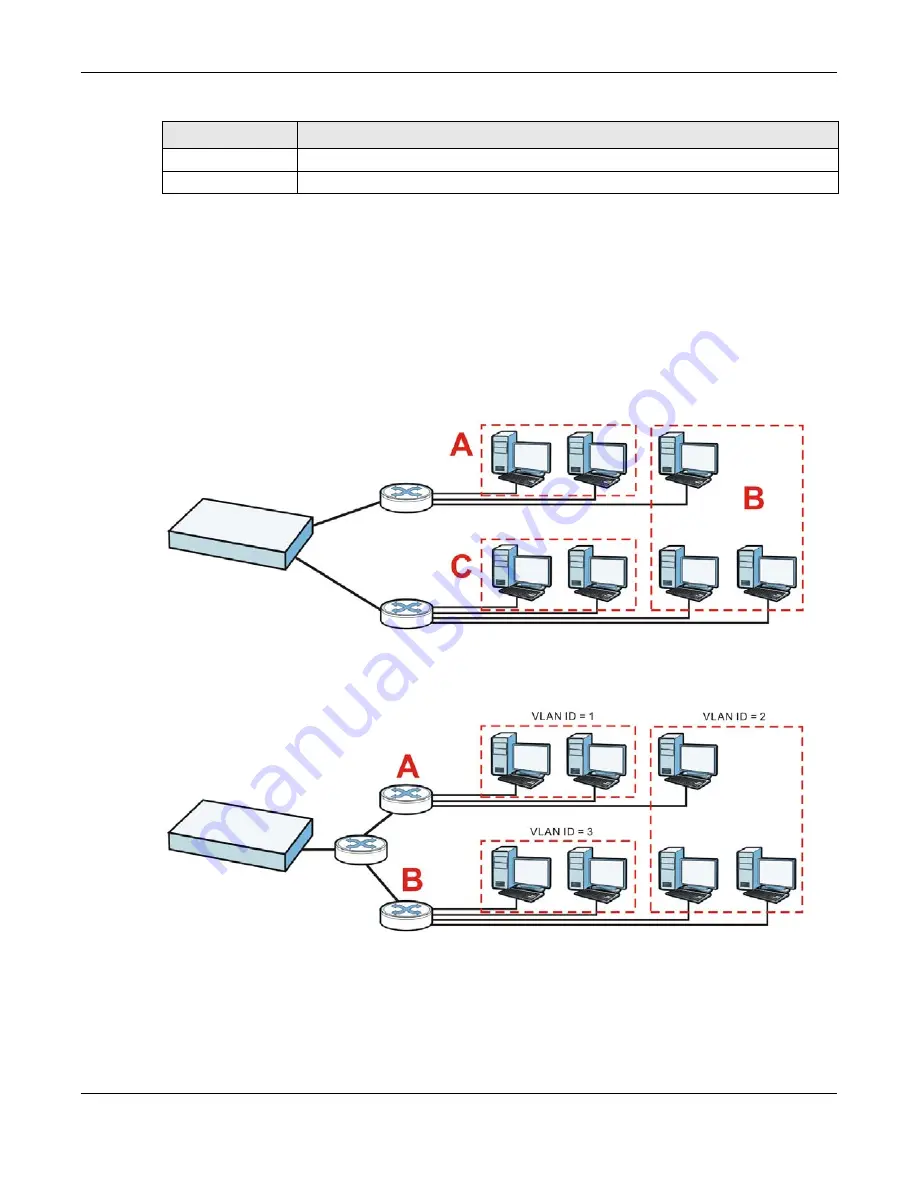
Chapter 10 Interfaces
UAG5100 User’s Guide
138
10.5 VLAN Interfaces
A Virtual Local Area Network (VLAN) divides a physical network into multiple logical networks. The
standard is defined in IEEE 802.1q.
In this example, there are two physical networks and three departments A, B, and C. The physical
networks are connected to hubs, and the hubs are connected to the router.
Figure 89
Example: Before VLAN
Alternatively, you can divide the physical networks into three VLANs.
Figure 90
Example: After VLAN
Each VLAN is a separate network with separate IP addresses, subnet masks, and gateways. Each
VLAN also has a unique identification number (ID). The ID is a 12-bit value that is stored in the
MAC header. The VLANs are connected to switches, and the switches are connected to the router.
(If one switch has enough connections for the entire network, the network does not need switches
A and B.)
OK
Click OK to save your changes back to the UAG.
Cancel
Click Cancel to exit this screen without saving.
Table 57
Configuration > Network > Interface > PPP > Add/Edit (continued)
LABEL
DESCRIPTION


























